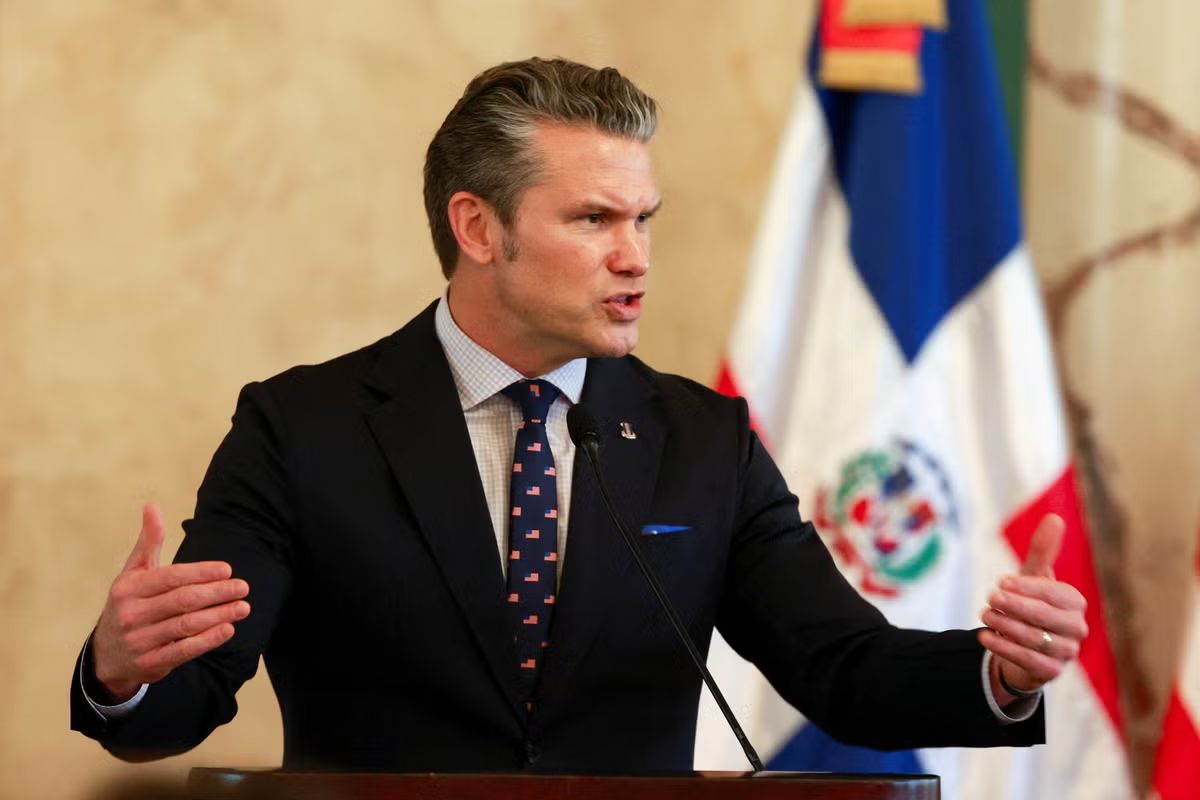Pete Hegseth’s order to ‘kill everybody’ included alleged drug boat survivors: report

Sign up for the daily Inside Washington email for exclusive US coverage and analysis sent to your inbox
Get our free Inside Washington email
Get our free Inside Washington email
Defense Secretary Pete Hegseth reportedly gave a verbal order to leave no survivors behind as Donald Trump’s administration launched the first of more than a dozen attacks on alleged drug-running boats that have killed more than 80 people over the last three months.
On September 2, U.S. military personnel fired a missile striking a vessel in the Caribbean that carried 11 people accused of trafficking drugs into the United States.
When two survivors emerged from the wreckage, a Special Operations commander overseeing the attack ordered a second strike to comply with Hegseth’s instructions to “kill everybody,” according to The Washington Post, citing officials with direct knowledge of the operation.
The two men were then “blown apart in the water,” according to the report.
News of Hegseth’s alleged command follows intense legal scrutiny from international investigators and members of Congress alleging that the Trump administration’s deadly campaign amounts to illegal extrajudicial killings, which law-of-war experts speaking to The Independent have labeled outright murder and a war crime.
open image in gallery
Defense Secretary Pete Hegseth allegedly instructed military personnel to leave no survivors behind as the Trump administration launched a series of strikes targeting boats suspected to carrying drugs towards the United States (REUTERS)
The Department of Defense “has no response to this post and declines to comment further,” a Pentagon spokesperson told The Independent Friday.
Chief Pentagon spokesperson Sean Parnell told The Washington Post that the newspaper’s “entire narrative is completely false” and that “ongoing operations to dismantle narcoterrorism and to protect the Homeland from deadly drugs have been a resounding success.”
In September, the Trump administration told Congress that the United States is formally engaged in an “armed conflict” with drug cartels that the president has labeled “unlawful combatants.”
Administration officials have labeled cartels “nonstate armed groups” whose actions “constitute an armed attack against the United States” and are now engaged in a “noninternational armed conflict” — or war with a non-state actor.
In the weeks that followed, the Trump administration directed more than a dozen strikes that have killed more than 80 people on vessels in the Caribbean and Pacific Ocean but have not publicly provided any evidence or legal justification for their deaths, according to lawmakers and civil rights groups.
A newly unveiled legal memo from the Department of Justice claims military personnel involved in the strikes won’t face criminal prosecution in the future, a defense that legal experts and national security scholars say has failed to prevent exposure to potential criminal liability.
The alleged traffickers pose no imminent threat to the United States and are not in what the administration has labeled an “armed conflict” with the country, according to officials and experts.
“The term for premeditated killing outside of armed conflict is murder,” said Brian Finucane, senior adviser with the International Crisis Group, a conflict policy nonprofit.
“And the Trump administration has not established that these strikes are taking place in an armed conflict nor that the targets would be lawful under the law of war,” he told The Independent this month.
open image in gallery
Donald Trump shared video of a missile strike on September 2 that killed11 people on a boat that officials claim was carrying drugs headed toward the United States (White House)
While it’s not clear what instructions the Justice Department’s Office of Legal Counsel has provided the administration, the White House appears to be using that guidance as a “legal permission slip to commit acts that might otherwise be criminal,” according to Finucane.
Asked why he won’t seek permission from Congress for his military campaign taking aim at South American regimes he claims are fueling a drug epidemic in the United States, Trump has said his government is “just going to kill people” instead.
“I don’t think we’re going to necessarily ask for a declaration of war. I think we’re just going to kill people that are bringing drugs into our country, OK? We’re going to kill them,” Trump said during a White House roundtable with administration officials last month.
“They’re going to be, like, dead, OK,” he said.
Trump shared a 29-second drone footage of the first strike on September 2 in a post on his Truth Social account the following day, warning that that the attack also served as a “notice to anybody even thinking about bringing drugs into the United States of America. BEWARE!”
The president said the 11 people on board were “terrorists” from the Venezuelan gang Tren de Aragua, which the administration has labeled a foreign terrorist organization.
Admiral Frank M. “Mitch” Bradley, the commander overseeing the operation from Fort Bragg in North Carolina, told personnel involved in the strike that survivors were legitimate targets because they could theoretically call other traffickers to retrieve them and their cargo, according to people with knowledge of the command who spoke to The Washington Post.
Bradley allegedly ordered the second strike to fulfill Hegseth’s command to kill all onboard.
At the time of the attack, he led the Joint Special Operations Command, which operates under command of the U.S. Special Operations Command and typically is responsible for performing classified military operations. He was later promoted to lead the parent organization.
SEAL Team 6 — formally known as the Naval Special Warfare Development Group, which handles complex and classified operations that may include higher-profile targets — reportedly performed intelligence collection to determine who was on the boat.
News of the so-called “double tap” strike was first reported by The Intercept within days after the attack.
open image in gallery
Trump administration officials have posted drone-captured footage on social media chronicling more than a dozen attacks on alleged drug-carrying vessels that law-of-war experts say amount to illegal extrajudicial killings (US Secretary of Defense Pete Hegseth)
Earlier this month, members of Congress last month received closed-door briefings on the attacks from administration officials, who were “unable to provide any credible explanation for its extrajudicial and unauthorized” attacks, according to Rep. Gregory Meeks, the top Democrat on the House Foreign Affairs Committee.
The legal justifications are “dubious and meant to circumvent Congress’ constitutional power on matters of war and peace,” he said in a statement following the briefings.
Top Democrats on House committees overseeing national intelligence, armed forces and foreign affairs have also demanded a vote on a resolution to block the Trump administration from continuing the strikes.
“The Trump administration has not provided a credible rationale for its 21 unauthorized military strikes on vessels in the Western Hemisphere, which have resulted in the extrajudicial killings of dozens of individuals,” they said in a joint statement last week.
“Nor has this administration explained why it has deployed an invasion-level force of roughly 15,000 troops, a carrier strike group, and military aircraft for a mission it claims is about counter-narcotics,” they added. “This posture is wildly disproportionate to the stated objective and far more reminiscent of preparations for war.”





